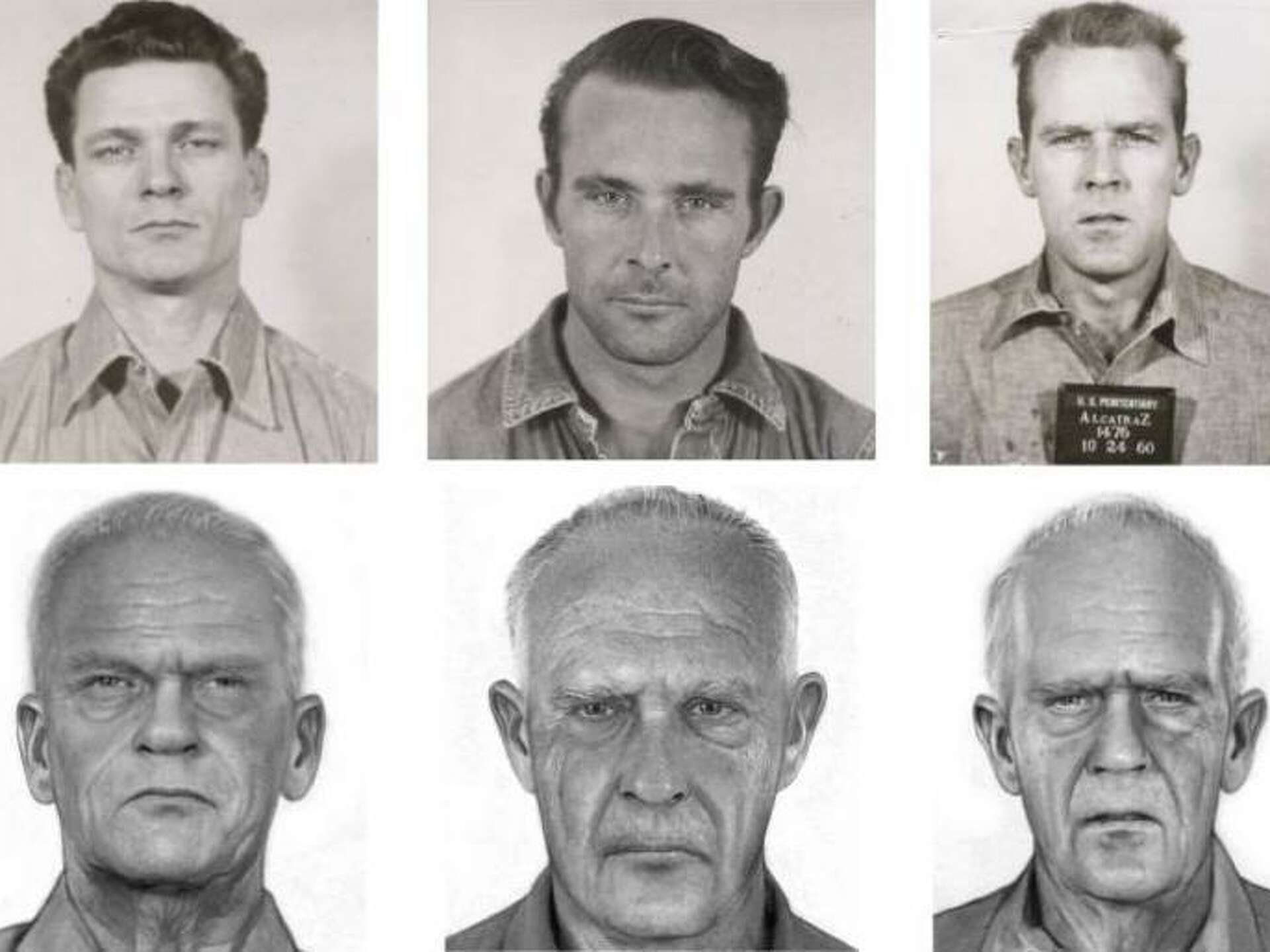Scientists have cracked one of America’s greatest unsolved mysteries: the fate of the Alcatraz escapees. In a groundbreaking revelation that has electrified both the scientific community and true-crime enthusiasts, new evidence suggests that Frank Morris and brothers John and Clarence Anglin may have survived their legendary 1962 escape from the island prison once thought to be inescapable.

For over six decades, the story of Alcatraz has lived on as both history and myth — the tale of three men who vanished into the freezing waters of San Francisco Bay and were never seen again. The official account declared them drowned, victims of the island’s fierce currents and frigid temperatures. But new scientific analysis has turned that long-standing belief on its head.
A team of researchers has used advanced computer modeling and tidal simulations to reconstruct the escape, discovering that if the men launched their makeshift raft during a specific tidal window around 11:30 p.m. on June 11, 1962, the currents could have carried them safely to Angel Island, just two miles north. “It’s not only possible — it’s probable,” one hydrologist said. “They may have been smarter and luckier than anyone ever gave them credit for.”
The escape itself was nothing short of genius. Over the course of months, Frank Morris — a convicted bank robber with an IQ reportedly above 130 — and the Anglin brothers meticulously planned their breakout. Using spoons, drills fashioned from vacuum cleaner parts, and a homemade raft made of 50 stolen raincoats, they dug through the crumbling concrete walls of their cells and climbed through a utility corridor to the roof. To fool the guards, they left behind paper-mâché heads with real human hair glued on top — a haunting touch that bought them just enough time to disappear into the night.

What happened next has fueled speculation for generations. The FBI, after a 17-year investigation, officially closed the case in 1979, declaring the escapees drowned. But the U.S. Marshals Service — which still lists the men as fugitives — never accepted that conclusion.
In 2013, a mysterious letter surfaced, allegedly written by John Anglin, claiming that all three men survived and lived quiet lives under assumed identities. “We made it that night,” the letter read. “Yes, we all made it. I’m 83 years old now and not in the best of health. I want to make a deal.” The handwriting analysis was inconclusive, but it was enough to spark renewed interest — and a wave of forensic testing on the evidence left behind.
Adding to the mystery are photographs that surfaced in the 1970s, allegedly showing the Anglin brothers alive in Brazil. Though heavily debated, facial recognition experts have found “compelling similarities” to the escaped inmates, further blurring the line between myth and fact.

The new scientific findings have breathed fresh life into the investigation, leading experts to suggest that the men could have not only survived but thrived for years in hiding. Some believe they may have been aided by relatives — the Anglins were part of a large, close-knit family from Florida who never stopped believing the brothers had made it.
“Everything about this case defies expectation,” one investigator noted. “They beat the system, the sea, and the odds.”
As the 55th anniversary of the escape continues to draw interest, Alcatraz stands not only as a monument to punishment but as a symbol of defiance — a reminder that even the most formidable walls can’t contain the human will to be free.
https://youtu.be/FL0276jvfiI





